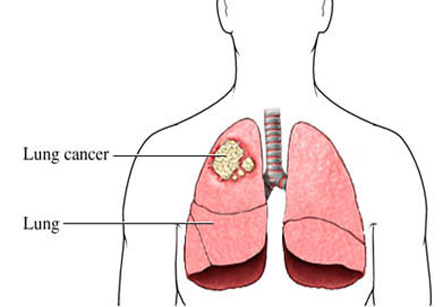Lobectomy
Introduction
Lobectomies are performed to prevent the spread of cancer to other parts of the lung or other parts of the body. Lobectomy may also be done to treat patients with noncancerous diseases such as chronic obstructive pulmonary disease (COPD). COPD includes emphysema and chronic bronchitis, which cause airway obstruction.
Procedure:
Lobectomies of the lung are also called as pulmonary lobectomies. The lungs are a pair of cone-shaped breathing organs inside the chest. The right lung has three lobes: a superior lobe, a middle lobe, and an inferior lobe. The left lung has only two lobes, a superior and an inferior lobe. Some lobes exchange more oxygen than others. The bronchi are two tubes which lead from the windpipe to the right and left lungs. Inside the lungs, there are numerous tiny air sacs called alveoli and small tubes called bronchioles.
A lobectomy is the surgical removal of a lobe of an organ. It most often refers to the removal of a section of a lung. It may also refer to the liver, brain, thyroid gland, and other organs

This procedure is done under general anesthesia. To perform a lobectomy, the surgeon makes an incision between the ribs to expose the lung. This is known as thoracotomy. The chest cavity is examined and the diseased lung tissue is removed. A chest drainage tube is then inserted to drain air, fluid, and blood out of the chest cavity. The ribs and chest incision are then closed.
This surgery may be recommended for the following reasons:
• Lung tumors
• Small localized areas of long-term infection (such as highly localized pulmonary tuberculosis or mycobacterial infection)
• Lung abscesses
• Permanently dilated airways (bronchiectasis)
• Permanent dilation of a section of the lung (lobar emphysema)
• Injuries resulting in lung collapse (atelectasis, pneumothorax, or hemothorax)
• Permanently collapsed lung (atelectasis)
Diagnosis
In some cases, the diagnosis of a lung disorder is made when the patient consults a physician about chest pains or other symptoms. The symptoms of lung cancer depend on the location of the tumor; they may include persistent coughing, coughing up blood, wheezing, fever, and weight loss. Patients with a lung abscess often have symptoms of pneumonia, such as a high fever, loss of appetite, general weakness, and putrid sputum.
The outcome of lobectomies depends on the general condition of the patient’s lung. This is because the lung tissue does not regenerate after removal.
The doctor first takes a careful history and performs a complete physical exam. Imaging studies include x ray of the chest and CT scan. If lung cancer is suspected, a lung biopsy may be done. If a lung abscess is suspected, a sample of the sputum is sent to a laboratory for culture and analysis.
For patients with COPD, pulmonary function tests are done to determine whether the patient will have enough healthy lung remaining after surgery. A quantitative ventilation/perfusion scan, or a quantitative V/Q scan can also be performed to determine this.
Preparation
Patients should not take aspirin or ibuprofen for seven to 10 days before surgery. Any blood-thinning medications such as warfarin, or clopidogrel should also be discontinued at least a week before surgery. Patients should not eat or drink anything after midnight, on the night before surgery.
Aftercare
If there are no complications, the patient is transferred from the surgical intensive care unit (ICU) to a regular hospital room within one to two days. Patients need to stay in the hospital for 7 to 10 days after a lobectomy. A mechanical ventilator is required to help the patient breathe. The chest tube normally remains in place until the lung has fully re-expanded. A physiotherapist will visit the patient to teach him or her deep breathing exercises. These exercises are essential for re-expansion of the lung and lowering the risk of pneumonia or other infections. The patient is given medications to control postoperative pain. The typical recovery period for a lobectomy is one to three months.
Risks
The specific risks of a lobectomy vary depending on the specific reason for the procedure and the general health of the patient. The risks for any surgery requiring a general anesthetic include reactions to medications, and breathing problems. Patients having part of a lung removed may have difficulty in breathing and may require the use of oxygen. Severe bleeding, wound infections, and pneumonia are possible complications of a lobectomy. Chest pain persists for some time after surgery, as the surgeon must cut through the patient’s ribs to expose the lung. Patients with COPD may experience shortness of breath after surgery.
Normal results
The outcome of lobectomies depends on the general condition of the patient’s lung. This is because the lung tissue does not regenerate after removal. Therefore, removal of a large portion of the lung results in need for oxygen or ventilator support for the rest of the patient’s life. However, removal of only a small portion of the lung may result in very little change in the quality of life.